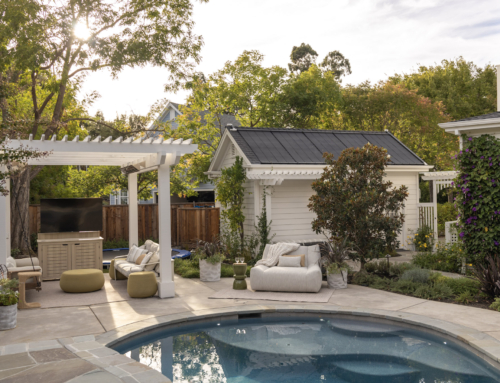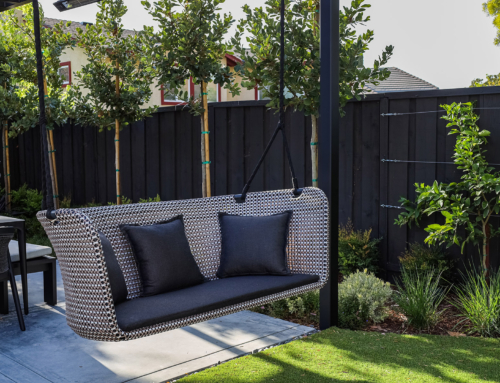Plant Focus: Phormiums
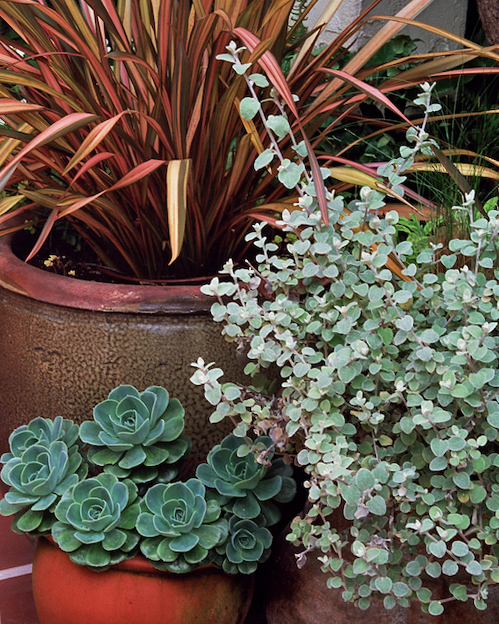
There are so many things to love about this time of year. Cooler weather and cozy vibes reign, and we relish the excuse to bring out our sweaters and hang out in the Autumn garden. That being said, late-season color in the garden can be a tough one. This is the time when evergreen foliage can really shine, but we’re not even a little bit in the mood for pine boughs and holly… definitely not near the decorative gourds… what a garden dilemma! Enter Phormiums, AKA New Zealand Flax. Not the kind of flax you find in your cereal, but the kind that packs an evergreen color punch all year long… an unexpected Autumn garden dream come true!
Leaf Appreciation
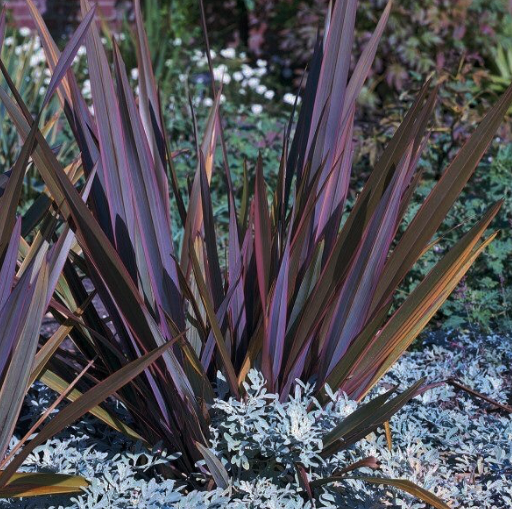
Phormium leaves have long been an attraction. In its native New Zealand, these leaves were used by the Māori tribes for fiber – hence the common name relating it to the unrelated European plant genus Linum (Flax) known for its fibers that are used to make linen. The Māori used Harakeke (Phormium) for everything woven, from baskets to cloth to rope. Today, Phormiums are rarely cultivated for this purpose, and instead have become a coveted garden staple for another reason – they are fabulously beautiful. In this garden, Phormium atropurpureum shines with silver Cerastium tomentosum for an elegant contrast. In the container garden shown above, Phormium ‘Māori Sunrise’ partners with Helichrysum and succulent Echeverias. Can you beat that color combo?
Phormium Phorm & Phunction
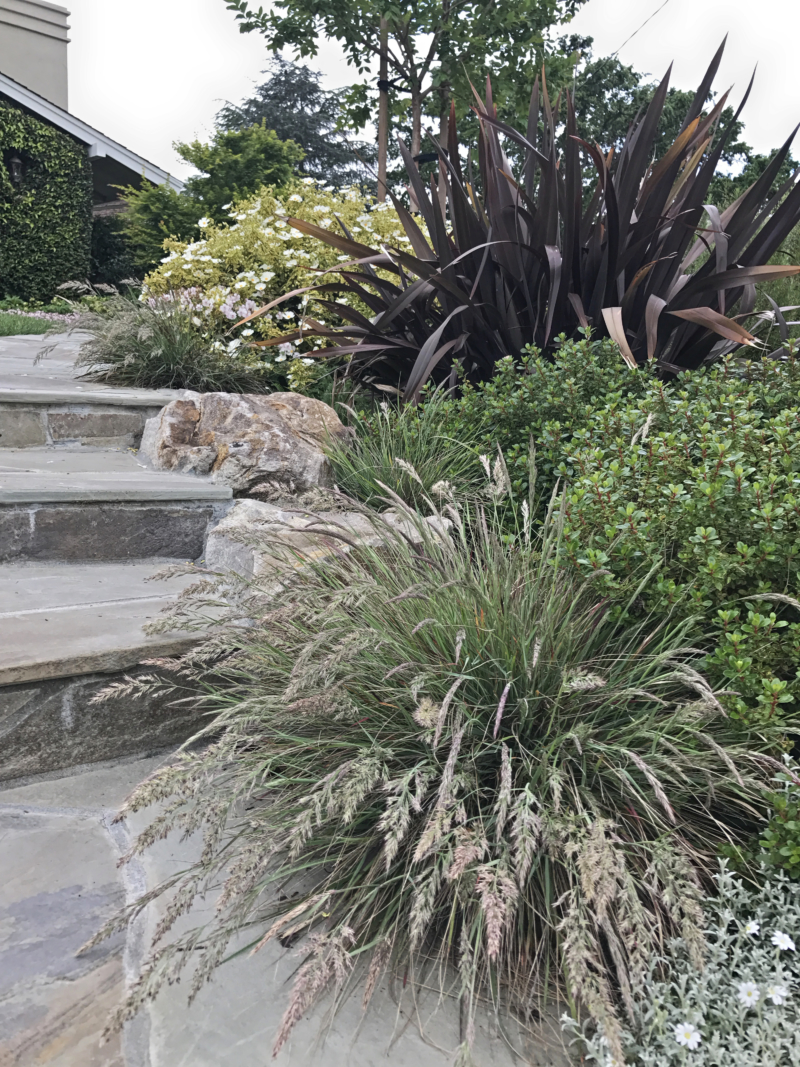
(You know we had to do that at least once…) Phormiums are a star of the Modern landscape and can fit beautifully into many other styles. Not to mention, their texture and stately form creates a great contrast. Paired with wispy grasses they’re a structural staple, combined with small-leaved shrubs they’re a textural contrast, in front of a stucco wall or corten steel panel they’re like pieces of modern sculpture.
If you talk to long-time gardeners (or are one yourself,) you may know that Phormiums have been around for, well, ever. It’s rare for us to stay excited about a plant for so long. Our continued excitement about Phormiums in the landscape lies in the many new varieties available – from chocolate-black to candy-striped, tiger-striped, hot pink, purple, gold and orange. But it isn’t only about the colors! New varietals also vary greatly in size, growth pattern, and overall form as well as the foliage color – Talk about versatile. This Phormium ‘Black Adder’ above, for example, flops at the tips rather than standing perfectly upright like most dark varietals. This is thrilling for planting designers because it changes the way the plant feels and functions in the landscape. Sometimes we want spiky, sometimes we don’t. Sometimes we want something 6 feet tall, and sometimes we only want 18 inches. It’s good to know that whatever we need for our design, there’s a Flax for that (ok, now we’re done.)
Mountain Flax

While the vast majority of familiar Phormiums are hybrids of Phormium tenax, their shade-loving and lush-leaved cousin Phormium colensoi (also cookianum) has been getting more recent press in the landscaping world. Not that these are new either- the stunning varietal ‘tricolor’ was reportedly sold in New Zealand nurseries as early as 1939! For some reason, certain things just take longer to popularize on our side of the pond. ‘Cream Delight,’ shown above next to the straight species, has been in cultivation since 1979. The weeping, elegant nature of these Phormiums is a sure win in the landscape, and their ability to tolerate shade is a distinguishing delight. These feel equally at home in a tropical garden, a woodland setting, or in mass on a traditional border. Hardy to 20 degrees, they are also tough as nails. As if this wasn’t enough, they have showy, almost orchid-like flowers beloved by hummingbirds:

Photo from Wikimedia Commons
Enough said.
If you’re excited about Phormiums, check out the San Marcos Growers list for well-researched information and photos of a great collection of what’s available in California. It would be impossible for us to pick favorites, as we find each one has its own time and place to shine. See what you think… maybe you’ll end up at your local nursery picking up some unexpected new beauties. Enjoy ~



